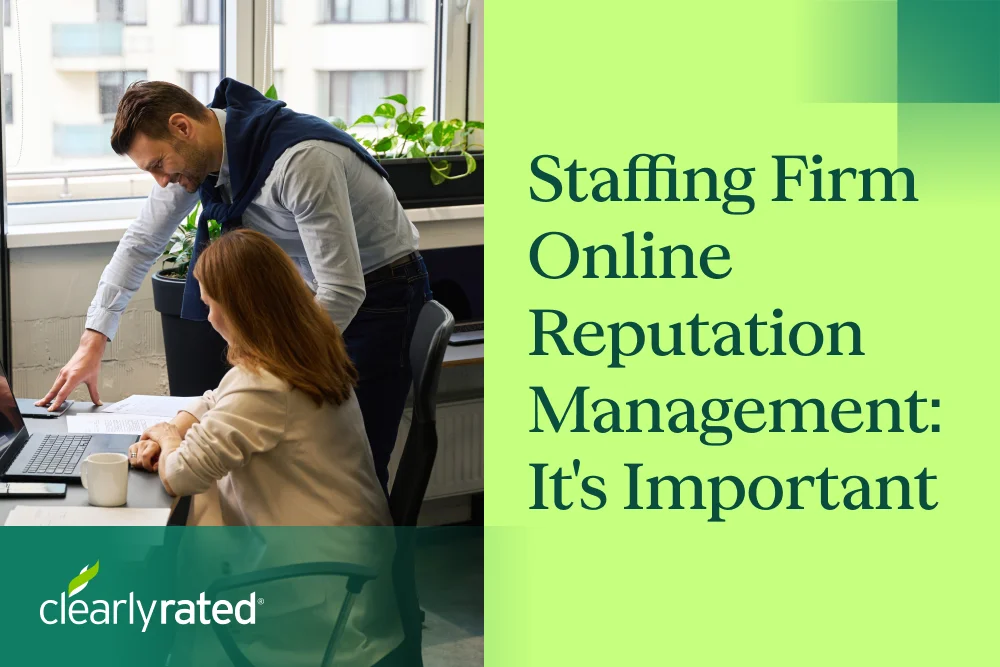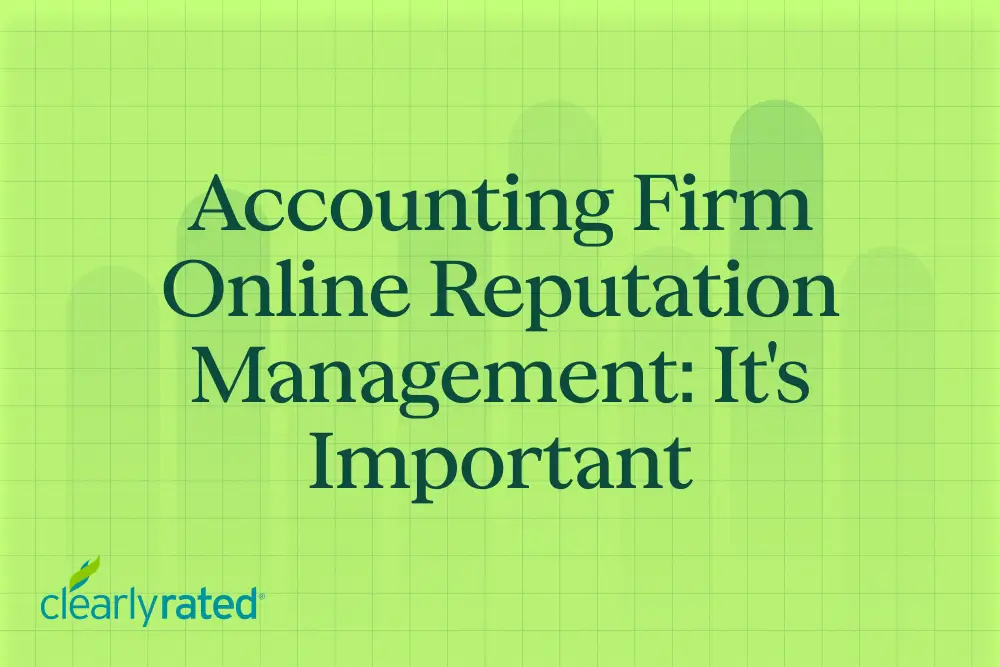11 Quick Tips to Improve Law Firm Profitability

- Profitability goes beyond billable hours. Many law firms lose money due to operational inefficiencies, high overhead, and client churn. Focusing solely on billing without fixing backend issues leaves revenue on the table.
- Client experience is a growth lever. Proactively capturing feedback using tools like ClearlyRated helps reduce churn, uncover issues early, and improve service delivery—leading to stronger client relationships and long-term gains.
- Track and optimize key metrics. Improve realization and collection rates, monitor satisfaction through Net Promoter Score (NPS), and track profit drivers weekly to stay on top of firm performance.
- Transparent pricing and onboarding build trust. Offering predictable pricing models and streamlining onboarding experiences reduce friction, improve retention, and differentiate your firm in a competitive market.
- Feedback fuels referrals and smart growth. Satisfied clients are your best promoters. Use feedback to identify advocates, launch referral campaigns, and shape strategic decisions backed by real data.
The truth is, billing more doesn’t always mean earning more. Most law firms focus heavily on maximizing billable hours, and that makes sense. But if you’re not paying attention to how your firm runs behind the scenes, you’re probably leaving money on the table. Operational inefficiencies, missed revenue opportunities, and a lack of client follow-through can burn your profits.
If you're serious about how to improve law firm profitability, start by tightening operations, enhancing the customer experience, and capturing lost revenue. A Customer Experience Platform for Law Firms can play a pivotal role here, helping firms streamline interactions, capture structured feedback, and align service delivery with client expectations.
This guide walks you through 11 smart, tactical strategies you can start using right away to drive stronger, more sustainable law firm profitability.
Tip 1: Focus on High-Margin Services
Every firm wants to grow, but not every service area warrants that growth. Some practice areas take up massive time and staffing but produce inconsistent or disappointing returns. You don’t need to cut those areas entirely, but you do need to evaluate them accurately.
To do so, run a detailed profitability analysis across your firm’s primary service categories. Look beyond revenue and examine actual contribution to profit. Focus on these few core metrics:
- Total time spent per matter
- Realization rate after write-downs and discounts
- Net margin once you subtract overhead, staffing, and admin time
- Average payment cycle length
- Client acquisition cost per matter or per segment
You’ll likely find a few low-visibility services that outperform the rest. Those are your high-margin areas and deserve more focus. Shift resources accordingly:
- Increase marketing around those services that consistently offer the strongest profit margins
- Assign your most efficient legal teams to handle those cases
- Restructure pricing models and matter workflows to reduce handling time without reducing value
- Feature your highest-return practice areas more prominently across your website and proposals
Narrowing your service scope may reduce case loads, but it increases income predictability and improves capacity planning. Use revenue per employee and margin per matter as benchmarks to continuously increase your law firm's profitability.
Tip 2: Eliminate Unnecessary Overhead
Overhead creeps in quietly, but it drains profits fast. Most firms spend more than they need to on things they barely use. Start with a clear look at your fixed costs. Break down your lease, support staff, software subscriptions, and internal tools. Ask one simple question: Does this still justify the cost?
In most cases, the answer will be no.
If you haven’t already, consider moving to a hybrid or fully remote model. That decision alone can free up thousands in monthly real estate costs. Use cloud-based platforms that combine billing, case management, document sharing, and client communications in one place. The fewer tools you use, the more control you gain.
Look at the work your internal teams handle that doesn’t tie directly to revenue. Outsource what you can, and don’t keep five tools when one good one does the job. Choose platforms designed for legal workflows with strong support and built-in collaboration.
Then, make this a habit:
- Review every recurring cost monthly
- Identify tools with poor adoption or overlapping features
- Compare output per dollar across all overhead categories
A lean operation won’t slow you down, but it’d remove waste and keep your firm focused on improving profitability. And reducing unnecessary costs is the fastest way to protect legal firm profit margins without adding pressure to your billable teams.
Tip 3: Use Client Feedback to Reduce Churn
It’s well-established that it’s cheaper to retain an existing customer than it is to attract a new one. In fact, retaining an existing customer can be up to seven times more cost-effective than acquiring a new one.
A 2013 study found that merchants lost an average of $9 for every new customer they acquired. Fast-forward to today, and that number has jumped to $29, which is a 222% increase. Rising customer acquisition costs and higher product returns are major contributors to this trend. So, every time a client leaves, it doesn’t just reduce your immediate revenue; it increases the pressure on your marketing, sales, and onboarding budgets to make up for the loss.
One of the biggest reasons law firms struggle with retention is a lack of visibility into the client experience. Misaligned expectations, limited communication, and poor follow-up are common culprits. Too often, firms don’t have a system in place to detect dissatisfaction until it’s too late.
ClearlyRated, for example, is a client experience platform designed to help law firms improve retention and reduce churn by capturing and analyzing client feedback in real time.
Here’s how ClearlyRated reduces churn:
- Capture feedback at key milestones: Gather input after consultations, during case progress, and post-resolution to stay in sync with client expectations
- Monitor satisfaction trends: Review performance metrics regularly to identify early warning signs of dissatisfaction. Use industry-specific surveys to gather targeted insights and benchmark your performance against peers.
- Enable targeted training: Use feedback data to coach teams on handling recurring concerns and improving client communication
- Identify issues: Identify where internal processes may be causing frustration, before they lead to churn
Firms that proactively manage feedback reduce churn, build trust, and retain high-value clients longer. These are critical client retention strategies for law firm operations. Even small improvements in satisfaction can produce major financial gains over a year, as retained clients offer recurring revenue, referrals, and a higher likelihood of paying premium rates.
Tip 4: Improve Your Realization and Collection Rates
You can’t just assume everything’s working because things feel busy. From monthly revenue billed to net overhead, what gets measured gets managed, so it’s essential to track, evaluate, and adjust regularly.
Intentionally monitoring key performance indicators (KPIs) tied to law firm profitability creates accountability and gives you the data you need to make informed decisions. If the data reveals that something isn’t working, don’t hesitate to make a change. This could be something as specific as low landing page conversion rates on your law firm’s website.
Some profitability metrics worth tracking include:
- Utilization rate: The number of billable hours worked divided by the total hours in the workday
- Realization rate: The number of billable hours invoiced divided by the number of billable hours worked
- Collection rate: The number of hours collected divided by the number of hours invoiced
While KPI tracking is essential in making informed decisions based on data, manual tracking can prove to be time-consuming and wasteful, ultimately hurting law firm profitability. Instead, take advantage of reporting tools that provide key metrics at your fingertips.
For instance, ClearlyRated's dashboard enables you to easily track loyalty, client risk, and satisfaction, displaying all feedback in a single view. You can easily identify trends, manage issues, and receive alerts for critical feedback, helping you stay ahead of potential problems before they impact your bottom line.
Tip 5: Offer More Predictable Pricing
Traditional hourly billing often falls short of meeting modern client expectations. Today’s clients value cost certainty and transparency. Alternative fee arrangements (AFAs), such as fixed fees, capped fees, and subscription-based legal services, are designed to meet this demand. Predictable pricing not only enhances the client experience but also speeds up decision-making and strengthens relationships.
To implement and refine your approach:
- Pilot AFAs across select practice areas and monitor the results using ClearlyRated for law firms
- Monitor client feedback regarding price clarity, billing disputes, and overall perceived value. Use this data to refine your pricing models and introduce flexibility without sacrificing profitability.
- Implement pricing calculators that provide clients with upfront cost estimates before engagement
- Offer premium tiers for faster turnaround times or enhanced support
- Where appropriate, structure fees around milestones or success-based outcomes
Law firms that adopt transparent pricing strategies are better positioned to build client trust, reduce billing friction, and shorten the sales cycle. Predictable pricing also supports more consistent revenue and improves the accuracy of financial forecasting, which are both key drivers of law firm profitability.
Tip 6: Train Staff to Deliver Value
Your employees are the face of your firm. How they communicate, respond, and support clients directly shapes the overall experience. If client satisfaction drops after interacting with a specific department or team, that’s a clear signal that more training or better support is needed.
Consistent training helps staff handle a range of situations, from managing complaints to delivering clear, proactive service. It also boosts team confidence and contributes to stronger employee retention, resulting in a more consistent client experience.
ClearlyRated makes it easy to highlight where training should focus. If client feedback highlights issues such as delayed updates, poor communication, or unmet expectations, you can use that data to inform and guide your coaching efforts.
Over time, you’ll also be able to measure whether those efforts are paying off.
Want to go a step further?
The platform can track service improvements through performance metrics like the Net Promoter Score (NPS), a proven way to understand whether clients would recommend your firm, and how their experience is evolving.
ClearlyRated’s 2024 benchmark study found that the legal industry’s NPS is still 5 points below its 2022 level, despite a recent increase. Though it has typically maintained higher scores (except from 2016–2018), the industry remains below the “excellent” threshold of 50. With rising client expectations, there's strong potential for improvement. Firms must continue enhancing service to stay competitive or risk falling behind.

NPS also provides valuable internal insights. It allows you to compare client satisfaction across practice areas, departments, and even individual attorneys. A well-managed NPS program highlights top performers and identifies areas where improvement is needed, providing a clear roadmap to strengthen client relationships and improve service.
Tip 7: Prioritize Client-Centric Culture
As Jack Newton explains in his bestselling book, The Client-Centered Law Firm, providing a client-centered experience is essential not just for satisfying clients but also for running a profitable law firm.
However, a client-focused culture doesn’t happen on its own, and it must be modeled from the top down. Leadership sets the tone through hiring, training, and how performance is measured and rewarded.
Here’s what you can do:
- Start by defining what client-first means for your firm
- Set clear response time expectations
- Create escalation paths for resolving issues
- Encourage staff to take initiative when problems arise
- Tie client satisfaction to performance reviews and compensation
- Run post-matter reviews to evaluate how well the team delivered
- Use client feedback to improve communication, processes, and consistency
You can also monitor patterns in your satisfaction data, particularly among NPS Detractors, Promoters, and Passives. These groups reveal where your culture is working and where it’s falling short.
When clients feel heard and valued, they stay longer and refer others. A strong client-centric culture boosts morale, protects your reputation, and drives long-term profitability.
Tip 8: Track Key Profit Drivers Weekly
You need live visibility into what affects profit. To stay ahead, firms need to monitor key profit drivers every week, including utilization, realization, average revenue per matter, collection rate, and net revenue per client. These metrics give a clearer picture of future cash flow and provide early signals for enhancing law firm profitability.
Utilize dashboards that integrate with your practice management system to identify changes in real time. Don’t overlook client satisfaction. ClearlyRated data often links drops in satisfaction to declining revenue. Look for early signs, such as slow response times or invoice pushback. Tracking these trends on a weekly basis helps you identify issues early, make faster decisions, and maintain steady financial performance.
Tip 9: Streamline Client Onboarding
The onboarding experience sets the tone for the entire relationship. A slow or confusing start can create frustration and lead to early churn. Keep the process simple, straightforward, and client-friendly.
To improve onboarding:
- Assign a single point of contact to guide each new client
- Use standardized intake forms and secure portals to cut down on emails
- Set clear expectations on timelines, fees, and deliverables from day one
Use ClearlyRated to understand how your onboarding process performs in real time.
- Track satisfaction across practice areas, offices, and partners
- Monitor service quality throughout the client’s lifecycle
- Get automated alerts for at-risk relationships before they escalate
A smooth start builds trust and keeps clients engaged for the long term.
Tip 10: Create Data-Driven Growth Plans
Growth plans based on guesswork often miss the mark. Use real-time feedback and engagement data to shape smarter, more targeted strategies.
Start with:
- Identifying which services clients rate highest and focusing your marketing there
- Flagging underperforming areas to uncover whether the issue is pricing, communication, or delivery
- Segmenting clients by satisfaction, revenue, and retention to build profiles of your best-fit clients
Leverage these insights to inform business development, prevent wasteful spending, and tailor service offerings to meet demand.
Bring department heads into quarterly planning using ClearlyRated data to track satisfaction trends, client volume, and retention risk. Align hiring, budget, and tools around where profitable growth is most likely. When your growth strategy reflects client needs, results follow.
Tip 11: Turn Client Feedback into Referrals
In the legal industry, referrals are one of the most powerful growth channels. Many clients choose a firm based on recommendations from people they trust. ClearlyRated helps law firms collect NPS and client testimonials, making it easy to spot top promoters and launch targeted referral campaigns.
Research shows that referred clients generate 30-57% more new business than those who are not referred. Understand why clients refer by asking yourself questions like:
- Do clients feel cared for and supported throughout their case?
- Are your attorneys explaining complex legal issues in a way that’s easy to understand?
- Is your billing process clear and frustration-free?
To keep feedback consistent, use NPS survey software that integrates with your existing systems and automates follow-ups. Syncing NPS data with your CRM helps track trends and make data-driven improvements.
ClearlyRated also lets you:
- Customize surveys by practice area or case type
- Control survey timing to avoid client fatigue
- Benchmark satisfaction within teams
- Identify cross-selling opportunities by tracking client needs
Once you know what builds trust, you can create more referral-friendly experiences and grow through happy clients.
Boost Your Law Firm Profitability Today with ClearlyRated
Minor improvements across operations and client satisfaction add up fast. To improve client satisfaction in law, firms need clear KPIs and real-time feedback.
Take the example of Lewis Roca, a U.S.-based firm that had strong client relationships but lacked a consistent way to measure satisfaction. Partner-led reviews provided insights but were not scalable or actionable.
By partnering with ClearlyRated and using an NPS survey, Lewis Roca was able to:
- Standardize satisfaction measurement using benchmarks
- Identify drivers of client happiness and dissatisfaction
- Provide real-time feedback to attorneys for immediate action
With almost 80% of clients considering leaving even after referrals, regular feedback checks prevent costly churn. ClearlyRated’s Satisfaction Survey Checklist helps law firms avoid pitfalls and get the most from their feedback programs.
You can achieve these results, too. Start by auditing your client experience now. Use ClearlyRated to measure satisfaction, spot risks early, and empower your team with insights that drive profit.
Book a demo today and make client satisfaction the foundation of your law firm’s profitability.
FAQs


.png)






%5B1%5D.webp)







.png)











_%20The%20Ultimate%20Guide.png)





.png)



















%20in%20the%20Workplace.png)










.png)

%20and%20how%20can%20you%20increase%20it.png)
_%20A%20Step-by-Step%20Guide.png)

.png)
.png)




_.png)



%20in%202028.png)


_%20The%20Ultimate%20Guide%20(2024).png)











